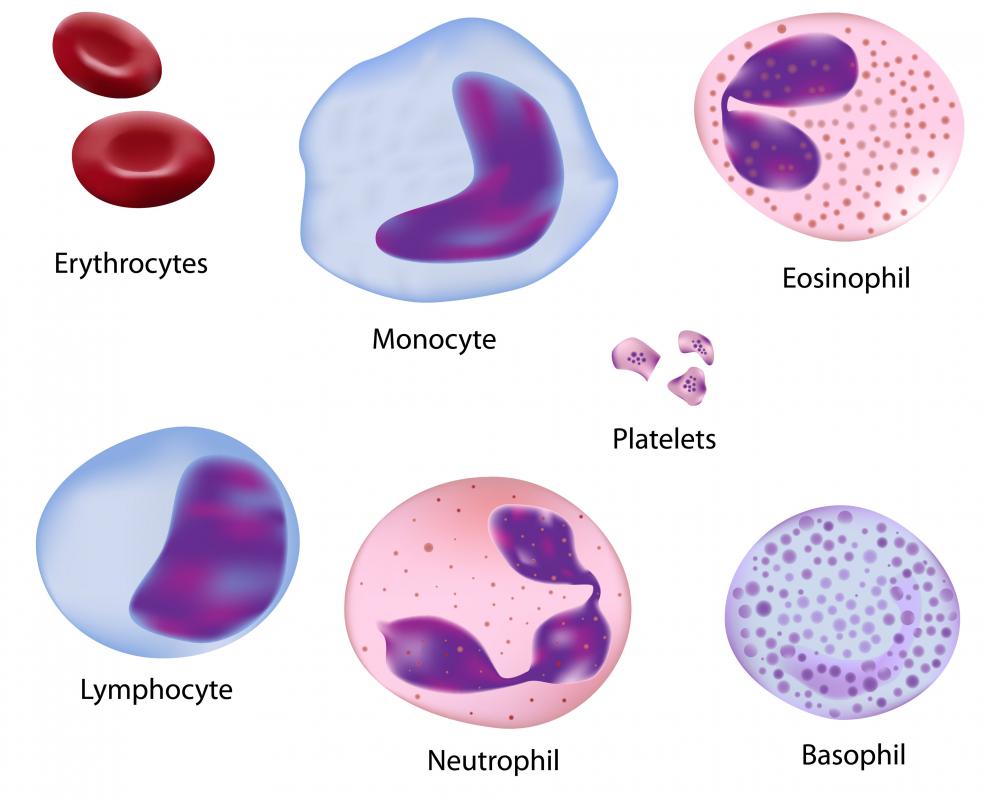At WiseGEEK, we're committed to delivering accurate, trustworthy information. Our expert-authored content is rigorously fact-checked and sourced from credible authorities. Discover how we uphold the highest standards in providing you with reliable knowledge.
What Is Hemapheresis?
Blood is made up of several components, and hemapheresis is the process of separating out one component from the blood and infusing the remainder back into the body. Particular cells, or particular biological molecules, can be the targets for this removal technique. Hemapheresis is also known as apheresis, pheresis or therapeutic hemapheresis.
Occasionally, the composition of the blood in the body can be unbalanced for health, and altering the levels of some components can help ease disease. Major cells found in blood include red blood cells and white blood cells. The white blood cell group includes five separate types of cells: the lymphocytes, monocytes, neutrophils, basophils and eosinophils. Platelets, which are fragments of cells, also circulate in the blood. The liquid in which these cells move around is called plasma.

Along with cells, blood carries biologically active molecules. Some examples are cholesterol molecules, which can affect circulatory health if present in certain concentration ratios. Medical professionals can use the technique of hemapheresis to remove unwanted cells or molecules from the blood, thereby reducing the risk to the patient's health.
Hemapheresis requires the patient to have a needle inserted in the body, out of which the blood can flow. This needle is attached to a machine that the blood runs through and that removes the unwanted component. Another needle system from the machine is also placed into the body for the blood to re-enter the circulatory system. Typically, the nurse puts the outflow needle in one arm and the inflow needle in the other.

Blood contains many nutrients that the body needs for efficient functioning, such as calcium, so this procedure can have temporary effects. Examples of side effects include becoming cold, suffering cramps in the legs or numbness in the extremities. On rare occasions, the patient can feel dizzy, and some might feel unusually tired.
One example of the medically beneficial use of hemapheresis is the removal of plasma from the blood to help treat lupus or rheumatoid arthritis. In this case, new plasma is introduced instead of the old plasma. The new plasma contains none of the substances present in the patient's own plasma that can cause the autoimmune disease symptoms.

Red blood cell removal and replacement can help people whose own red blood cells do not work correctly, as in the case of sickle cell disease. Excess levels of white blood cells can occur in illnesses such as leukemia, and reducing the amount of cells can avert more health issues. Hemapheresis techniques also can be used to separate out white blood cells so they can be treated with ultraviolet light and returned to the patient's bloodstream. This treatment can help reduce unwanted immune reactions to organ transplants or other, similar conditions.

Abnormally high amounts of platelets in blood can increase the risk of cardiovascular problems such as stroke. Hemapheresis can sift out the excess platelets to reduce the risk. Another possible use of the technique is to harvest stem cells in the blood, which can repopulate affected areas of the body, in patients who are undergoing radiation therapy.
AS FEATURED ON:
AS FEATURED ON:


















Discuss this Article
Post your comments